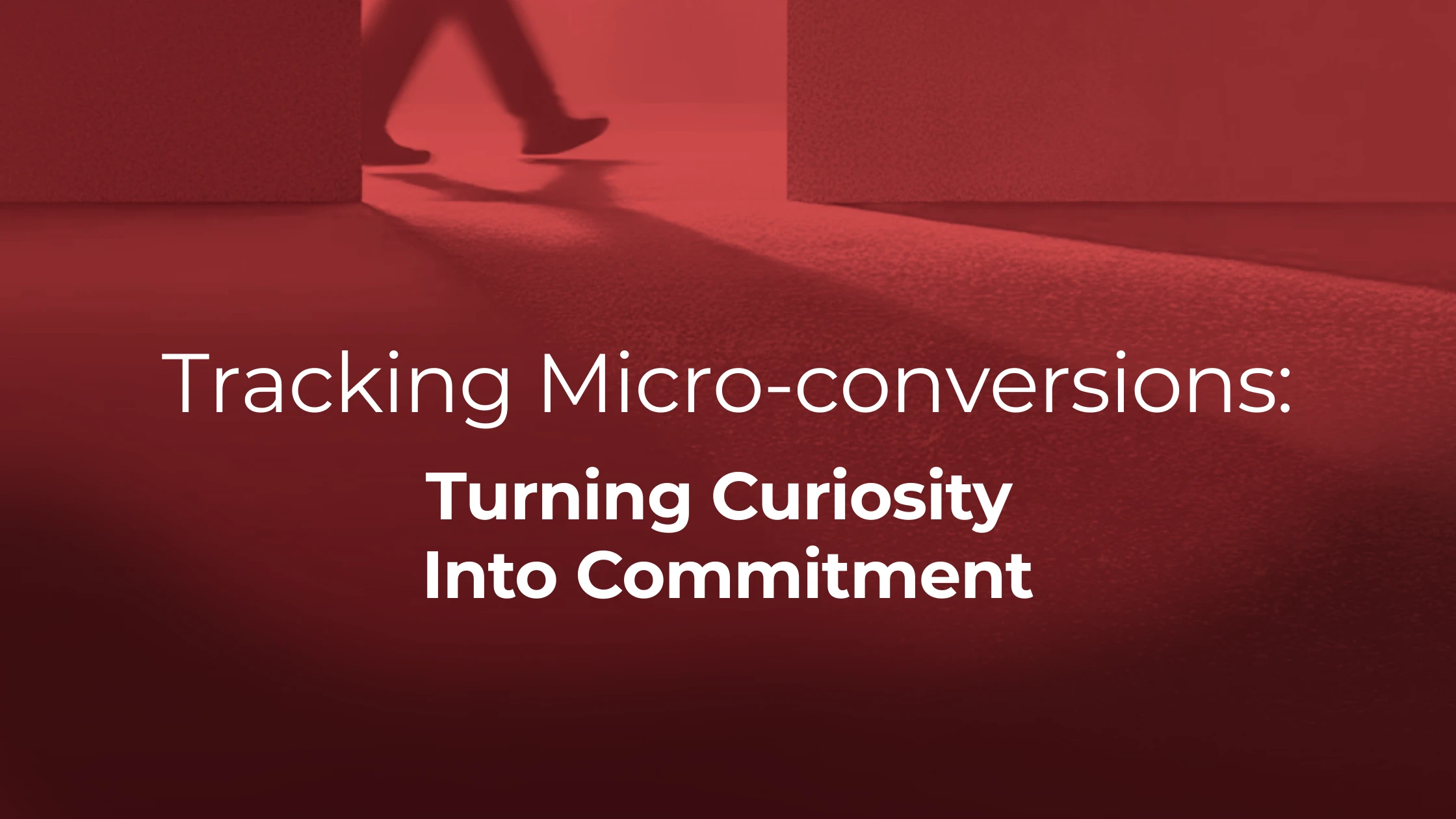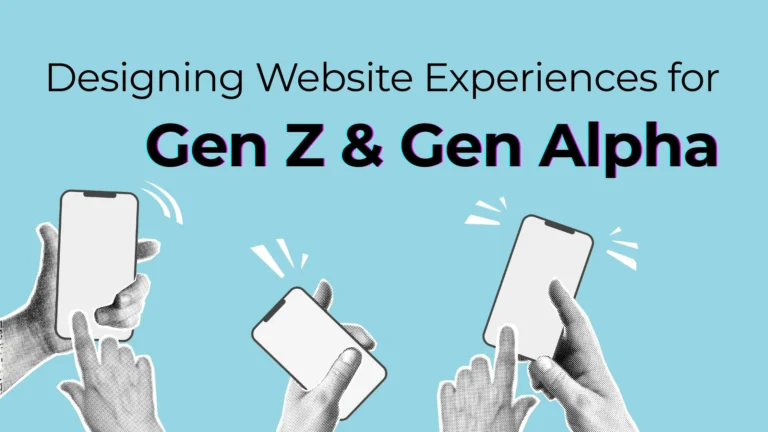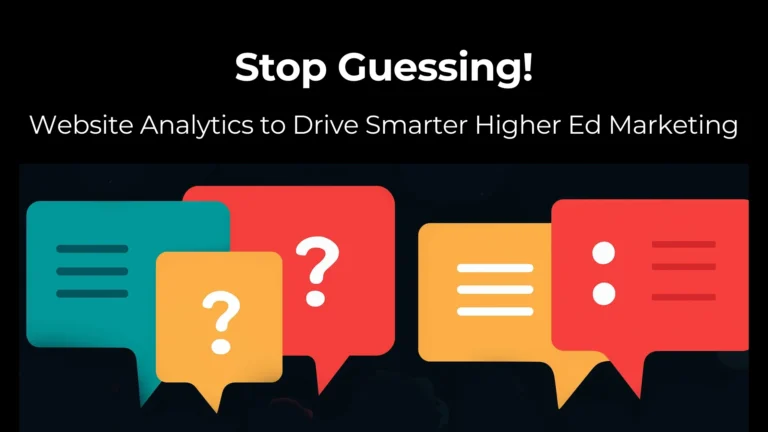This article explores what micro-conversions are, why they matter in the unique context of higher ed, how they align with proven enrollment models, and how institutions can design their websites to encourage and measure them effectively.
The small steps that power big decisions
Choosing a college is a major life decision. It can feel very high-stakes and emotionally complex, especially for students and their families. They have additional influences like counselors and peers.
Since deciding what school to attend isn’t as simple as buying a product on Amazon, we need to treat the experience we design accordingly. The discovery and purchase does not happen in minutes. Infact, it may take months, or years.
Of course, there will probably be visitors to your site who are ready to apply, but there will be a large percentage of them who are early in their journey. That’s why it is so important to connect with users early and intentionally nurture a relationship built on a series of smaller commitments.
When institutions design their websites with micro-conversions in mind, those sites become always-on enrollment partners: guiding students step by step, capturing signals of intent, and producing the data teams need to act strategically.
What is a micro-conversion?
A micro-conversion is a small, measurable action that shows a prospective student—or their family—is leaning in. These actions are happening on your website, whether you learn to capture them and nurture them, or not.
Let’s look at examples of micro-conversions and where they typically sit in the enrollment funnel:
- Awareness & engagement signals: Using the program finder, visiting program pages, admissions pages, how to apply pages, watching videos of student testimonials, and reading about campus life.
- Inquiry signals: Submitting a Request for Information (RFI), downloading a guide, subscribing to a newsletter, asking a chatbot a question.
- Decision signals: Registering for a campus visit, signing up for a virtual info session, attending a student panel.
Importantly, these are all actions that happen on the institution’s website, so they can be measured by your marketing and enrollment team.
Behavioral psychology reinforces why these actions matter. The foot-in-the-door effect, famously coined by Jonathan L. Freedman and Scott C. Fraser in the research paper Compliance without pressure: The foot-in-the-door technique, demonstrates that when someone agrees to a small request, they are more likely to agree to a larger one later. In practice, this means a student who first downloads a scholarship guide is more likely to later start—and finish—an application.
Micro-conversions turn curiosity into commitment — one small step at a time.
Turn curiosity into commitment—one small step at a time.
Since the student commitment journey is lengthy and nonlinear, capturing information early, can help you better understand early funnel visitors.
They sustain momentum in a long journey
With smaller commitments, students develop a deeper understanding of your school. Each micro-conversion—whether a video view, a guide download, or a tour registration—creates a stronger connection between the student and the institution. Research shows it takes multiple interactions with a brand before someone makes a major decision. Micro-conversions provide those meaningful interactions that sustain engagement across months and years.
They make big decisions approachable
They provide proof of fit
Families and students want reassurance about affordability, belonging, and outcomes. Micro-conversions provide that reassurance in digestible ways: the net price calculator, a attending a virtual tour, or a prospect downloading a program guide. Each interaction answers a question and builds confidence in the institution’s fit.
They generate actionable data
Micro-conversions provide early indicators of funnel health. Inquiry activity—often initiated through Request for Information forms—is one of the most important early indicators of funnel health. Similarly, monitoring tour registrations or guide downloads can reveal early engagement trends long before application deadlines. These signals help marketing and admissions teams align strategy and allocate resources with greater precision.
Every micro-conversion is a signal of trust: a click, a view, or a form filled is a step closer to enrollment.
They reflect modern, nonlinear decision-making
The journey isn’t linear. A student might browse in the fall, disengage for months, then return in the spring to register for a tour. Parents and high school counselors often play a significant role in influencing decisions at each stage. According to Niche (2024), nearly two-thirds of high school seniors say their parents or guardians have a major influence on their college decision-making. Tracking micro-conversions acknowledges this zigzag path and makes it visible, ensuring institutions can support steady progress even when the journey takes time.
Your website as always-on enrollment support
A college’s website consistently ranks as the top resource for students researching institutions. That makes it the most powerful communication and connection tool you own. There is opportunity to continually learn from site visitors and request information from them to help you make a personal connection and nurture their journey.
Your website is an always-on recruitment support—guiding students step by step through the enrollment journey.
Illustrative micro-conversion examples
- The explorer: A student uses the program finder, watches two videos, and submits a really short RFI. Their journey becomes visible and nurtureable.
- The parent researcher: A parent downloads a financial aid guide and runs the net price calculator. They are asked to submit an email address in the process. They receive a follow up email asking them if they would like additional support to understand their options. You can now nurture the relationship with the parent.
- The engaged prospect: A student who submitted an RFI months ago registers for a virtual event and follows it with a campus tour signup. Marketing can see this sequence in real time and share it with admissions for targeted follow-up.
A mindset shift for institutions
Focusing on micro-conversions shifts the emphasis from measuring only final outcomes to understanding the pathway that leads there. By valuing each small step, institutions:
- Give students approachable ways to engage.
- Collect actionable data that informs smarter outreach.
- Gain early visibility into funnel performance.
- Create positive momentum across a long and complex decision cycle.
Key takeaways
- Micro-conversions—like RFIs, downloads, and visit registrations—are measurable steps that keep students moving forward.
- Each one builds confidence, provides reassurance, and deepens interest.
- Tracking them gives institutions an early read on funnel health, well before application deadlines.
- The institutional website is the hub where these actions happen and the one channel marketing can measure with precision.
- Designing for micro-conversions turns a website into an always-on enrollment partner.




